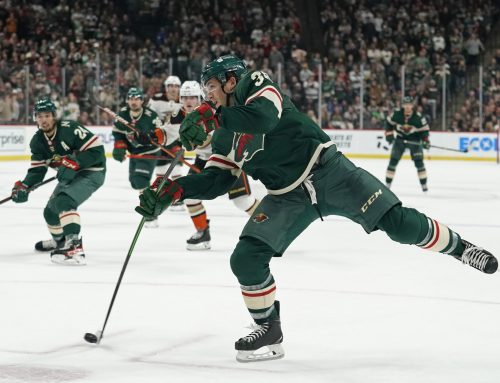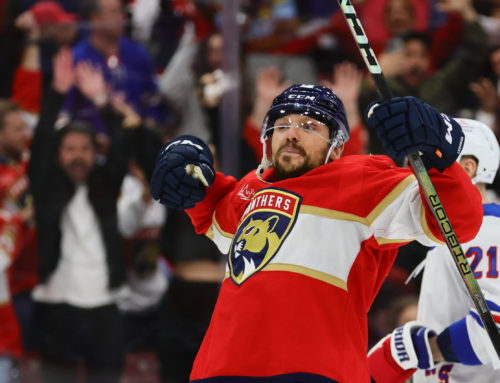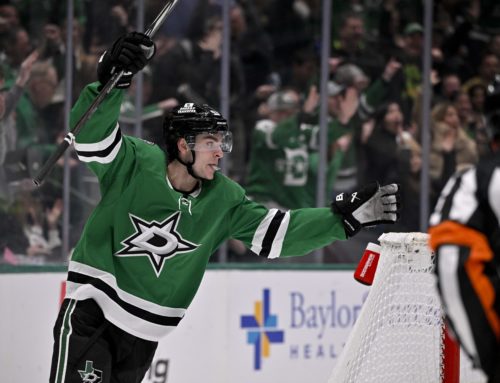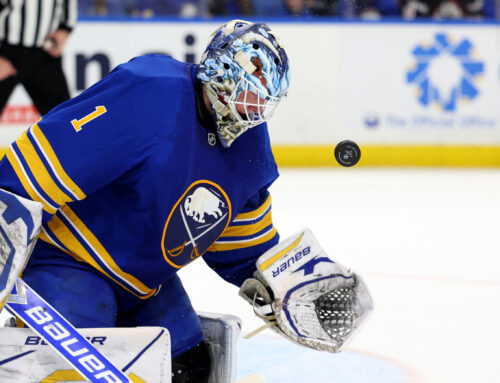
Bias is simply a part of everyday life. It ranges from the mundane – picking one lunch diner over another simply because of personal connections with owners/employees despite food/service quality – to the outright damaging. Regardless, cognitive bias is simply everywhere.
This is no different in fantasy sports. Fantasy owners can be biased because of their favourite team, favourite players, personal connections with different franchises, media popularity, or a host of other reasons. These types of bias, and many others, affect how certain players are viewed.
One quick way to remove bias, at least initially, is to remove the nameplate from players and just compare numbers. Fantasy sports is, at its essence, all about having better numbers than your opponents. Once numbers are compared, it’s easy to work backwards and see where the bias may be built in to a player, and that can provide an advantage over league mates.
I thought it would be worth going through some unnamed players, comparing their most recent two-year averages, their average draft position or rankings across different platforms, and see where advantages can be gained by fantasy owners.
Much of the information will be gleaned from Hockey Reference and Frozen Pool. Everything else will be linked accordingly. I am also assuming 12-team leagues and standard Yahoo roto league categories.
****
Player A: 158 games played, 0.31 goals/game, 0.36 assists/game, 3.14 shots/game, 168 penalty minutes, 31 power-play points. Ranked 112th preseason on Yahoo.
Player B: 164 games played, 0.30 goals/game, 0.49 assists/game, 3.07 shots/game, 38 penalty minutes, 47 power-play points. Ranked 27th preseason on Yahoo.
Player B in this instance is being ranked in the third round on Yahoo while Player A is in the 10th round. Player A has a miniscule edge in goals, but a massive edge in penalty minutes. Player B averages about 10 more assists and about eight more power-play points a season. Both players finished within half a round of each other by the end of the 2016-17 season.
Who are they? Former teammates Nazem Kadri (Player A) and Phil Kessel (Player B).
Given how their respective teams use their power play – Toronto uses two units while Pittsburgh uses one heavily – it’s no surprise there is such a disparity in power-play points. However, Kadri averaging 16 a season over the last two years is nothing to sneeze at, particularly with a team on the rise. On the flipside, there’s a good argument for the Pens being worn down after back-to-back Cup runs, and Kessel will be 30 years old this season while Kadri will be 27.
They are different types of players playing two different positions but these two haven’t been seven-rounds dissimilar over the last two years. Even in 2015-16 when the Leafs were stripping down their team to the frame, Kadri was still a top-100 player in roto leagues. He’ll be drafted at his floor this year, and that’s almost always good value.
****
Be sure to grab your copy of the Dobber Draft Guide!
****
Player A – 143 games played, 0.33 goals/game, 0.37 assists/game, 2.13 shots/game, 44 penalty minutes, 31 power-play points
Player B – 163 games played, 0.33 goals/game, 0.41 assists/game, 2.43 shots/game, 38 penalty minutes, 37 power-play points
There really isn’t much of a gap, at all, between the two players. Once games played are factored in, these two players are virtually identical despite a small shot and assist edge for Player B with a small penalty-minute edge for Player A.
Player A is Alex Galchenyuk and Player B is Sean Monahan.
Given all the calamities that 2016-17 brought for Galchenyuk – namely injury and demotion down the lineup – he was a player who averaged 25 goals and 26 assists per season through his age-20 and age-21 seasons. He looked to be a burgeoning offensive star but then 2016-17 was just a disaster pretty much from start to finish.
Meanwhile, Monahan has been a model of consistency early in his season. Over the last three years, he’s managed between 27-31 goals, 31-36 assists, and 191-199 shots each season. He also happens to be the centre for one of the most dynamic wingers in the league and has the luxury of a great second line behind him that can eat a lot of the tough minutes.
There will be a sizable difference in the ADPs between these two players as draft season progresses. Fantasy Pros has their average ranking separated by about three and a half rounds while Yahoo’s is even larger at about six rounds.
Of course, this is a situation where context is a huge factor. As mentioned, Monahan gets to play with Johnny Gaudreau. By the end of Montreal’s season, Galchenyuk was seeing ice time with Andrew Shaw. It was just a week ago that Claude Julien said the Habs may try Jonathan Drouin at centre, which would probably keep Galchenyuk off the top line.
This is all about how much risk a person is willing to take on. In roto leagues, Monahan isn’t a player who stuff penalty minute or shot categories which means his upside is capped; he can’t reach the elite tier without a monster point-producing season. The same goes for Galchenyuk, but he won’t be a fifth-round pick. Once training camps start, if news comes out that Galchenyuk is centring the top line, his ADP will rise. At this point, his ranking has the idea that he won’t be a top-line centre built into it, which means he probably won’t get cheaper than he will now, and has performed similarly to a player going several rounds higher than him despite all his problems last year.
****
Player A – 153 games played, 0.13 goals/game, 0.42 assists/game, 2.37 shots/game, 44 penalty minutes, 24 power-play points
Player B – 152 games played, 0.13 goals/game, 0.44 assists/game, 2.33 shots/game, 49 penalty minutes, 31 power-play points
This is another instance where these two players are virtually the same in production over the last two years. One player has a small edge in power-play points (about four per season) but other than that, they’ve been very similar production-wise over the last couple of years.
Player A is Alex Pietrangelo and Player B is Tyson Barrie.
One huge caveat here is that some may have noticed that I have not included plus/minus in the comparisons so far. It is random, and can even vary so wildly on the same team – Nick Bonino was minus-5 for Pittsburgh last year while Ian Cole was plus-26 – that projecting plus/minus is hard.
However
I think we can safely assume the Avalanche will be bad this year. One-of-the-worst-teams-this-generation bad? Again? Maybe not. But still nowhere near a playoff team. To say that one huge difference between Pietrangelo and Barrie this year should be plus/minus is true. I say should because even on a playoff-bound Blues team last year, Pietrangelo was still just plus-3. It’s a dumb stat. Again, however, it’s fair to say there will be a gap in this regard.
Everywhere else, though, these two have been pretty much the same over the last two years.
I can already hear people screaming “BUT KEVIN SHATTENKIRK IS GONE!” And yes, Pietrangelo went on a tear after Shattenkirk was traded to Washington last year with 18 points in 20 games. But beware of small samples: when Shattenkirk missed nearly two months in 2014-15, Pietrangelo had two goals and 13 points in 25 games. Post hoc etc., etc.
Because Colorado is expected to be so bad, it’s forgivable that Barrie would be overlooked. Even in an abysmal season last year, though, he was still on a 42-point pace/82 games with a career-best in shots per game. Presumably, things can’t get worse for Colorado, and hopefully the younger group like Mikko Rantanen and Tyson Jost can keep progressing. With better power-play production, Barrie could be a minus-20 player and still be a fringe top-30 roto defenceman. Considering there will probably be over a half-dozen rounds between them, the track record of Barrie is not a bad bet to take.
****
Those are just a few players worth mentioning for now and more will be discussed as September wears on. More than anything, it’s an exercise to start training your brain that while context obviously matters – Kessel stapled to the Penguins power play; Galchenyuk not on the top line for Montreal; Barrie playing for Colorado – sometimes it’s important to remove context temporarily to give a better idea about what, exactly, two (or more) players have accomplished relative to each other. Once that comparison is made, it’s at that point that fantasy owners need to determine whether the perceived gap between those two (or more) players is justified by the context.
As mentioned at the top, bias is everywhere in every facet of life. When it comes to fantasy sports, it’s nearly impossible to eliminate it. Many fantasy players, however, don’t even bother trying to limit their bias, whether consciously or not, and they are worse off for it. Do your best to remove bias from comparisons/projections and get a leg up on your league mates.
8 Comments
Leave A Comment
You must be logged in to post a comment.





 EDM
EDM FLA
FLA CHI
CHI ANA
ANA CGY
CGY

Superb stuff Mike – fantasy insight in an enjoyable context. I for one would love to see more of this between now and when the season starts.
Thanks Rick! I’ll be doing some more for sure.
Comparing unamed players is the best way to avoid biais, but you need to compare apples with apples. Comparing a C to a RW is useless because depth at both positions are very different. Let say there is only 5 or 6 RW making 65+ points and 10 or 12 C doing the same then it’s clear the RW will go out way ahead in draft
So that would be part of the context that would apply to one player being selected that much higher than another?
Like this! But I would like to see plus/minus included.
Thks Mike.
I just assume everyone would identify a players value in #’s with names with in each pools scoring format. I have had 1000’s of trade discussions & I don’t just offer up players but always include #’s, where they rank now, last season & on 3 year average with in that scoring system also addressing positional variances. I have never understood why someone would pay a higher price for player X than player Y. At least as it relates to players that are fully developed & established.
In 2 of the fantasy leagues I participate in on CBS the shortage of RW’s due to their data providers; Elias Sports Bereau, position has RW a barren wasteland. To buy a 50 point fantasy point RW would cost you about a 75 FP center or 60 FP LW. Even then trying to convince someone to even trade a mediocre 1 is virtually impossible.
We have 20 teams, we are required to dress 3 RW’s. That’s 60 before injuries. There aren’t 60 decent scoring RW’s available in this format on CBS.
Projecting rookies, prospects or players after trades or coaching changes is hard to do as uncertainty & lack of #’s clouds the water.
Good post should be very helpful for most readers.
I have Colorado to be the 2nd worst team in the west this season but I also have them scoring 40 to 50 more goals than last year. Duchene & Barrie both make my top 10 bounce back candidates & when finalized as we approach opening day should be top 5.
Colorado will be bad in the standings but they will score significantly more goals giving every player that had the misfortune of playing in Colorado last season more fantasy points than they had last season.
Should Duchene move in trade he could be significantly better depending upon where he might land but at the very least he returns to career norms even if in Colorado.
Great article! A trade went down in my keeper league this off-season where some players switched team seemingly based on name value alone. The one owner got fleeced because he went for a couple sexy names rather than focus on the actual numbers. I think we’ve all been guilty of it in the past at times, and it’s an easy thing to get caught up in a big name player joining your team but when you step back and really examine the numbers, the juice isn’t always worth the squeeze.